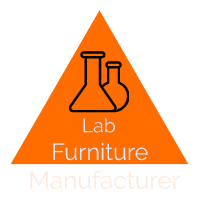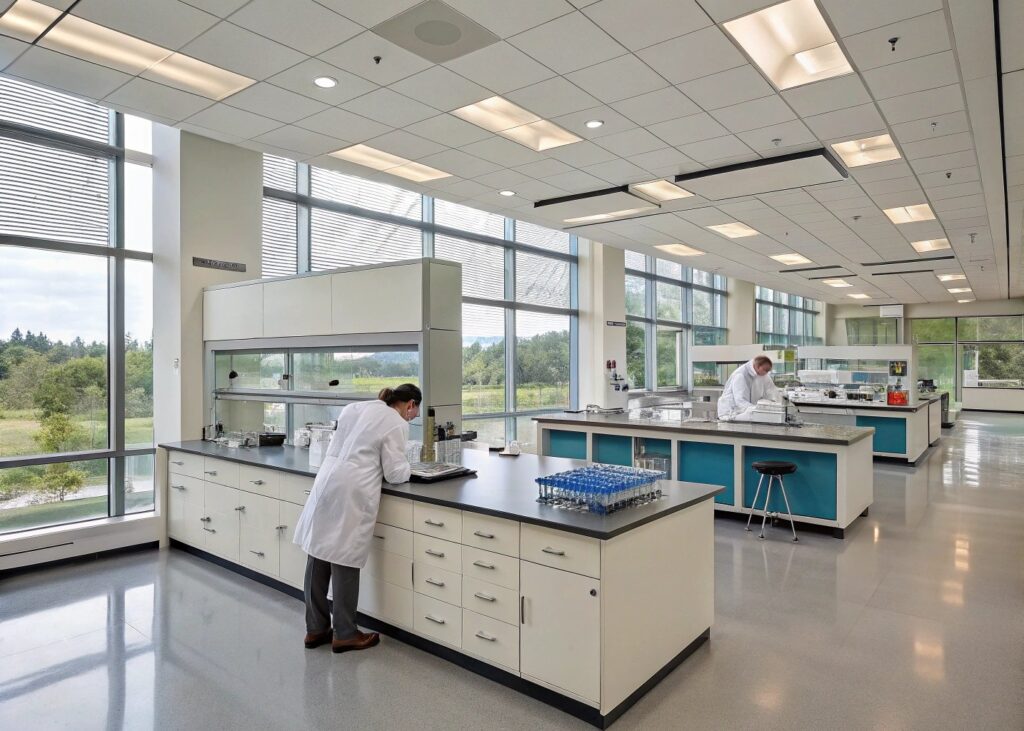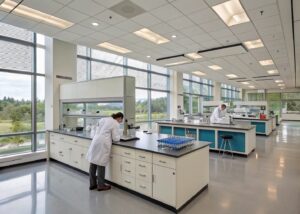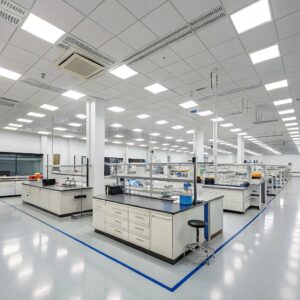Table of Contents
Designing a pharmaceutical testing laboratory is a complex yet essential process that demands careful planning to ensure functionality, safety, regulatory compliance, and operational efficiency. Whether you’re a lab manager, architect, or pharmaceutical professional, understanding the key elements of lab design can make the difference between a facility that merely functions and one that excels. This article outlines critical considerations, from functional zoning to smart integration, to help you create a cutting-edge laboratory tailored to pharmaceutical testing needs.
Functional Zoning
Functional zoning is the foundation of an efficient pharmaceutical laboratory design. By segmenting the lab into specialized areas, you can prevent cross-contamination, streamline workflows, and enhance productivity. Here are the key zones to include:
- Sample Reception Area: The entry point for samples, where they are logged, labeled, and stored temporarily. Isolation here is critical to avoid contamination.
- Pre-Treatment Area: Reserved for preparing samples through homogenization or extraction, requiring strict hygiene controls.
- Analysis Area: The core testing zone, housing advanced tools like chromatographs, spectrometers, and microbiological equipment.
- Data Processing Zone: A quiet, separate space for analyzing results and generating reports, free from lab interference.
- Waste Handling Zone: Designed for safe storage and disposal of chemical, biological, and general waste.
To optimize zoning:
- Use physical barriers or partitions to separate zones.
- Establish unidirectional flows for samples, staff, and waste to reduce risks.
- Include transfer windows and dedicated corridors for secure material movement.
- Plan flexible spaces to accommodate future upgrades or new equipment.
This approach ensures a cleanroom design that supports both current operations and long-term adaptability.
Architectural Structure and Materials
The structural framework and materials of a pharmaceutical testing lab must prioritize durability, cleanliness, and safety. Here’s what to focus on:
- Walls and Flooring:
- Walls should feature epoxy resin coatings or ceramic tiles—materials that resist corrosion and simplify cleaning.
- Floors need to be anti-slip, resistant to acids and alkalis, and anti-static. Options like epoxy flooring or PVC excel here.
- Ceiling:
- Choose dustproof, corrosion-resistant materials such as color steel plates or aluminum panels, which also support ventilation systems.
- Doors and Windows:
- Equip the lab with fireproof, explosion-proof doors featuring airtight seals.
- Install double-glazed windows to minimize noise and boost thermal insulation.
These choices create a robust, low-maintenance environment that meets stringent lab safety standards.
Environmental Control
Maintaining precise environmental control is non-negotiable in pharmaceutical testing. Key factors include:
- Temperature and Humidity:
- Keep conditions at 20–25°C and 45–65% humidity using reliable HVAC systems—either centralized or zone-specific.
- Cleanliness Standards:
- Areas like sterility testing zones must meet ISO 14644-1 Class 7/8 requirements, achieved with HEPA filters and air purification technology.
- Lighting:
- Provide uniform lighting (at least 300 lux) for general tasks, with brighter options (e.g., 500 lux) for precision work like microscopy.
These controls protect samples, equipment, and personnel while ensuring consistent test reliability.
Ventilation and Exhaust Systems
Proper ventilation is a lifeline for labs handling hazardous substances. A well-designed system includes:
- General Ventilation:
- A fresh air system to maintain airflow and prevent the buildup of dangerous gases.
- Exhaust Systems:
- Dedicated ducts with rooftop vents and activated carbon filters to safely remove volatile organic compounds (VOCs).
- Local Exhaust:
- Fume hoods or articulated exhaust arms in high-risk areas like pre-treatment zones to capture contaminants at their source.
Effective HVAC for labs ensures a safe, breathable environment for all occupants.
Safety Infrastructure
Safety infrastructure is the backbone of a secure lab. Essential components include:
- Fire Protection:
- Install smoke detectors, sprinklers, and fire extinguishers, with explosion-proof fixtures in volatile areas.
- Emergency Equipment:
- Position eyewash stations, safety showers, and first-aid kits within easy reach.
- Containment Measures:
- Use leak-proof drains and emergency tanks to contain chemical spills swiftly.
- Electrical Safety:
- Opt for explosion-proof, moisture-resistant wiring and outlets with ground fault protection.
These systems ensure compliance with regulatory standards and protect lives and assets.
Sustainability and Energy Efficiency
A sustainable lab design reduces environmental impact and operational costs. Key practices include:
- Waste Management:
- Create segregated storage areas with leak-proof, corrosion-resistant containers for all waste types.
- Wastewater Treatment:
- Pre-treat lab effluent to comply with environmental discharge regulations.
- Energy Conservation:
- Use energy-efficient HVAC systems, LED lighting, and smart controls to cut power usage.
- Improve insulation with double-glazed windows and quality materials.
These steps align with modern demands for sustainable lab design while maintaining efficiency.
Smart and Digital Integration
Incorporating smart technologies elevates lab performance and oversight. Focus areas include:
- Automation:
- Deploy IoT-enabled systems to automatically regulate temperature, humidity, and ventilation in real time.
- Data Infrastructure:
- Install high-speed cabling for seamless data transfer and remote monitoring, integrating with lab management software.
These innovations streamline operations and enhance data-driven decision-making.
Conclusion
A well-executed pharmaceutical testing laboratory design integrates functional zoning, durable architectural materials, precise environmental controls, robust ventilation, comprehensive safety measures, sustainability, and smart technologies. This holistic approach ensures efficient workflows, regulatory compliance, and a safe environment for personnel. By investing in these considerations, labs can deliver reliable results, support pharmaceutical advancements, and adapt to future challenges. Regular evaluations and flexible designs will keep your facility ahead in the ever-evolving world of science.




